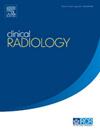The role of dual-energy computed tomography (DECT) in emergency radiology: a visual guide to advanced diagnostics
IF 2.1
3区 医学
Q2 RADIOLOGY, NUCLEAR MEDICINE & MEDICAL IMAGING
引用次数: 0
Abstract
Dual-energy computed tomography (DECT) has become an essential tool in emergency radiology, significantly enhancing diagnostic capabilities for a variety of acute conditions. By utilising two distinct X-ray energy spectra, DECT differentiates materials based on their attenuation properties, providing detailed insights into tissue composition and pathology.
In emergency settings, DECT is used in thoracic imaging for the detection of pulmonary embolism, in abdominal imaging to enhance the diagnosis and characterisation of conditions such as pancreatitis, appendicitis, gastrointestinal bleeding, and bowel ischaemia and in the genitourinary system for identifying kidney stones, pyelonephritis, and urinary bleeding.
In neuroimaging, DECT enables image optimisation through virtual monochromatic images and the reduction of metal artifacts. It helps in the differential diagnosis of haemorrhage versus tumour-related haemorrhage, haemorrhage versus contrast extravasation, and in the dating of vertebral collapse.
DECT offers several advantages, including enhanced visualisation, the potential to reduce radiation exposure and contrast medium, and improved diagnostic accuracy across a wide range of conditions. However, its routine clinical adoption is still evolving due to challenges such as limited availability, cost, and the need for specialised training.
This pictorial essay aims to encourage the broader integration of DECT into emergency imaging protocols by showcasing its clinical applications and benefits.
求助全文
约1分钟内获得全文
求助全文
来源期刊

Clinical radiology
医学-核医学
CiteScore
4.70
自引率
3.80%
发文量
528
审稿时长
76 days
期刊介绍:
Clinical Radiology is published by Elsevier on behalf of The Royal College of Radiologists. Clinical Radiology is an International Journal bringing you original research, editorials and review articles on all aspects of diagnostic imaging, including:
• Computed tomography
• Magnetic resonance imaging
• Ultrasonography
• Digital radiology
• Interventional radiology
• Radiography
• Nuclear medicine
Papers on radiological protection, quality assurance, audit in radiology and matters relating to radiological training and education are also included. In addition, each issue contains correspondence, book reviews and notices of forthcoming events.
 求助内容:
求助内容: 应助结果提醒方式:
应助结果提醒方式:


